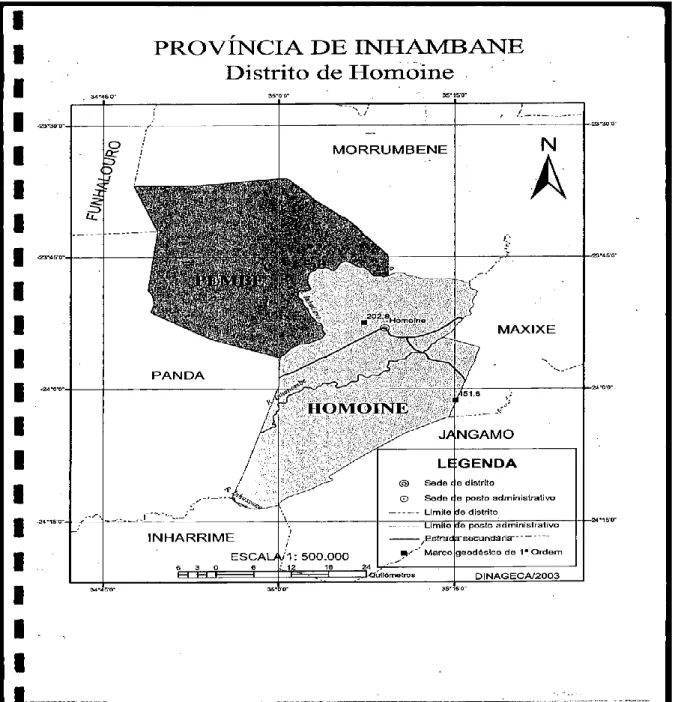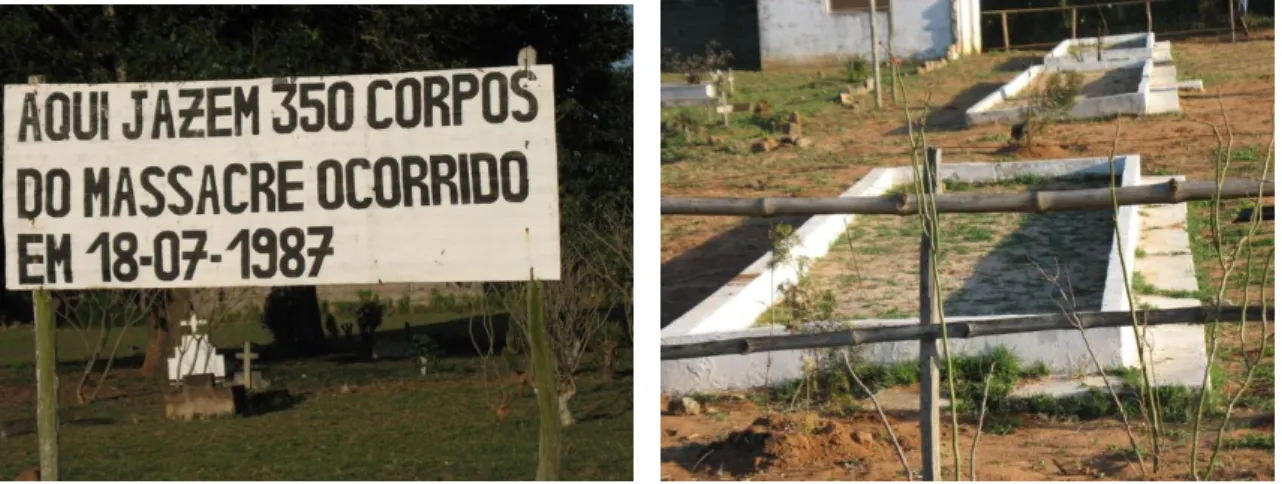One part consists of a detailed socio-historical analysis of the context of poverty and economic inequality in the Homoine district of Mozambique. Third, it analyzes the response of the church (United Methodist Church in Mozambique) to the problems of poverty and economic inequality in the Homoine district.
Introduction
Research Background and Motivation
This research therefore analyzes Ezra's building project in order to recover elements of an economic ethic that can orient economic analysis and reflection in Homoine district in the context of poverty and economic inequality. 1 The causes of poverty and economic inequality in Homoine district are fully discussed in section 2.3.4 of this research.
Research Questions
Theoretical Framework
The Marxist analysis is a constitutive element of the ideo-theological framework used in this study (liberation). Therefore, this study uses Marxist categories to analyze both the biblical text and the African context.
Research Methodologies
Within the tripolar approach, this research uses Marxian analytical concepts as developed by Norman Gottwald (1993). The Marxian analytical concepts are used within an ideological liberation framework to refer precisely to “relationships between people in actual social formations and to specify where and what to pay attention to in social interaction” (Gottwald 1993: 146).
Structure of the Research
On the other hand, a socio-historical approach allows the researcher to locate the literary dimensions of narratives within the communities that produced them (or the socio-historical context of the text). Chapter five draws on findings from previous chapters to highlight the need for the church and/or theologians in Homoine District to fully address issues of poverty and economic inequality and support an economic organization that benefits all members of society, such as that advocated by the Mosaic Covenant, obtained from Ezra's construction project.
Conclusion
Introduction
The General Economic-Historical Context of Mozambique
The Path through the State-Based Model of Development
This means that the Frelimo government has failed to improve the lives of local people through this state-based development model. Moreover, the outbreak and intensification of the civil war also negatively affected the socialist initiatives that the Frelimo government had already planned.
Limping through the Aid-Based Model of Development
Third, Mozambique had to adopt the policies of the International Monetary Fund (IMF) and the World Bank for structural adjustment (Hanlon & Smart 2008:36). This privatization process has benefited the majority of the Frelimo elite, who are increasingly becoming the richest group in the country.
The Decentralized Model of Development
Within this centrally controlled decentralization in Mozambique, the districts are given a kind of autonomy in which they can plan and carry out their local development programs according to the needs of the local people. According to Article 1, in the first chapter of the decree number 6/2006, the districts are given the freedom to have their own local organic structure (CM 2006:121).
Poverty and Economic Inequality in Homoine District
- Locating Homoine District in Mozambique
- Assessing the Economic Potentialities of Homoine District
- Indicators of Poverty and Economic Inequality in Homoine District
- The Causes of Poverty and Economic Inequality in Homoine District
Therefore, the context of poverty and economic inequality in the district of Homoine needs to be carefully examined in light of these economic phases that have shaped the economy of the country in general. Accordingly, these factors highlight the scenarios of poverty and economic inequality that concern the majority of the population in the district of Homoine. First, the Ministry of State Administration stated that one of the problems of poverty and economic inequality in Homoine District is the large number of people living in the area (MAE 2005:3).

How does the Church Respond to the Problems of Poverty and Economic Inequality in
In other words, many Christians in the Homoine district are hybrid entities in the sense that they attend Sunday services while living according to the principles laid down by their traditional religions.24 For the purposes of this research, the church's response to the problems of poverty . and economic inequality in the Homoine District will be limited to the United Methodist Church in Mozambique (IMUM). Fourth, IMUM has worked hard to improve the infrastructure of the church, such as toilets, offices and others (IMUM 2011). The assumption is that this money is directed to programs of the church as an institution instead of being focused on core priorities such as reducing poverty and economic inequality in the district.
Conclusion
Introduction
The Economic-Historical Context of Ezra’s Building Project
The Economic Situation of the Israelites in Palestine
Furthermore, the Israelites who remained in Palestine were "the poorest in the land" (2 Kings 25:12, New International Version). Therefore, the Israelis who remained in Palestine could not effectively restore their economic stability. In response to the economic crisis, the Israelis who remained in Palestine developed an alternative form of social organization.
The Economic Background of the Exiles in Babylon
With this in mind, the research will proceed to analyze the economic background of the Israelites in Babylon. Jeremiah's words seem to have been taken seriously by the Jews in Babylon. In other words, the incorporation of the exiles into Babylonian society created opportunities for them to improve their economic situation.
The Economic Policies of Persia
Therefore, it can be argued that the construction project in Jerusalem was part of the imperial policies of Persia. However, it can also be argued that Persia allowed and sponsored the Jewish construction project in order to gain economic dividends from it. Each of the provinces was headed by a governor appointed by the Persian authorities (Flanders, et al.
Retrieving Elements of an Economic Ethic from Ezra 3
The Chiastic Structure in Ezra 3
When the builders laid the foundation of the temple of the LORD, the priests were among them. C': When the work began, those who had returned from exile appointed leaders to oversee the building of the house of the Lord (vv. 8-9). B': The builders laid the foundation of the temple to praise the Lord as instructed by David, king of Israel (v.10-11).
Analysing the Content of the Chiastic Structure in Ezra 3
- The People Assembled as One Person and the Shouting with Mixed Emotions (A and
- The Altar and the Foundation of the Temple (B and B’)
- Inclusion and Exclusion in the Building Project (C and C’)
- International Trade (D)
After the foundation of the temple, the returnees from captivity are presented screaming and with mixed emotions. Although other types of celebrations took place after the altar was built (for example, the Feast of Tabernacles); the main purpose of its construction was to offer burnt offerings (Ezra 3:2). The builders laid the foundation of the temple, and the priests and Levites took their place to praise the Lord (Ezra 3:10).
The Mosaic Memory in Ezra’s Building Project: An Element of an Economic Ethic
In fact, a literary analysis of the chiastic structure of Ezra 3 metaphorically captures the struggle in the text. A metaphor for the egalitarian project of the early Israelites is present in the text through the invocation of Moses, but it is located at the edge or periphery of the structure. The economic memory represented by the metaphor of the Mosaic covenant is present in the text and indeed in the realities behind the text.
How did Religion Respond to the Economic Struggle in Ezra’s Building Project?
Consequently, the economic ethics that can be obtained through this analogy of struggle is not the ethics of Ezra's practice, but the communitarian biblical ethics represented by the Mosaic covenant in the text. The cooperation between the state and the temple was a mechanism used by rulers to legitimize the extraction of tribute from the subject people in the name of the saint. This withdrawal of tribute was indeed legitimized by religion centered in the temple.
Conclusion
In view of this, it could be concluded that religion was used in Ezra's construction project to legitimize the tributary system. Although religion was used by the elite in Ezra's building project to legitimize the memory of David, the Mosaic tradition remained unchanged. However, this liberating memory of Moses, located at the edge of the structure, should not guide the economic reality in Ezra's building project, for it is suppressed by the consolidating memory of David, who is closer to the center of the chiasm. .
Introduction
Bridging the Hermeneutic Gap through an Analogy of Struggle
Based on these past experiences, it could be argued that the Church today can truly promote the Mosaic economic ethic in the Homoine District to reduce the problems of poverty and economic inequality. Therefore, education is one of the valuable strategies that the Church can use to promote the Mosaic economic ethic in the Homoine district. This question was based on the hypothesis that: the story of the construction of the altar and the temple, as described in Ezra 3, provides elements of an economic ethic that can dialogue with poverty and economic inequality in the Homoine district of Mozambique .
The Mosaic Economic Ethics in the Context of Poverty and Economic Inequality in
What should the Church do with the Mosaic Memory in Homoine District?
Lucia Van Bergh (2009:28) claims that the church in Mozambique played a significant role in the struggle for independence. The role of the Church throughout Mozambique's history did not end with the struggle for independence. So it can be argued that the Church in Mozambique has a history of success in various types of struggle.
Conclusion
Accordingly, the Mosaic ethic drawn from Ezra's building project can develop its liberating potential in the Homoine district (and elsewhere in Mozambique) if the church retells this memory in its communities. Through education, the church can de facto help local communities resist their economic impoverishment in the Homoine district. Through education, the Church and/or theologians can help the communities of the Homoine district to resist their economic marginalization, but this education should emphasize the liberation memory rooted in the Mosaic covenant.
Introduction
Summary of the Research
Further, the chapter showed that the church (IMUM) partially deals with the problems of poverty and economic inequality in the Homoine district, but it does not fully challenge the systems that contribute to this problem. The chapter then showed that an economic ethic could be drawn from Ezra 3, namely the Mosaic covenant, the metaphor for early Israel's egalitarian project. Then the chapter showed that the Mosaic economic ethic taken from Ezra 3 represents an alternative economic motivation that can help societies reduce the problems of poverty and economic inequality in.
Recommendations for further Research
The final chapter suggests that, as in the struggle for independence, the church should educate the communities in Homoine district about Mosaic memory and its liberating capacity. Through education, the church (IMUM) and/or theologians can help the communities in Homoine district to understand their economic struggle and find their way forward regarding the situation.
Conclusion
República de Moçambique, retrieved on September 3, 2012. lt;http://www.fotw.net/flags/mz.html>. Distrito de Homoine: Rastreando a Despesa de 2010, Centro de Integridade Publica, Maputo, retrieved on July 24, 2012. lt;httpwww.cip.org.mzcipdoc>. State coat of arms of the Union of Socialist Republics, recovered on September 3, 2012.

